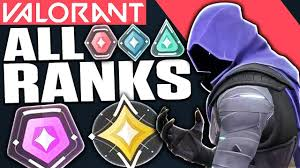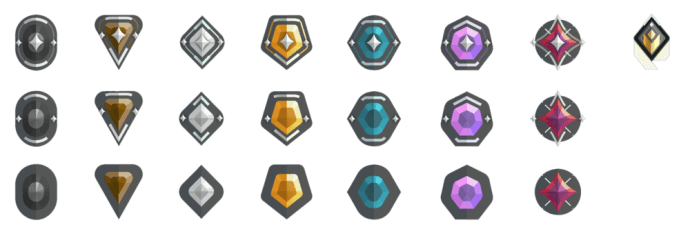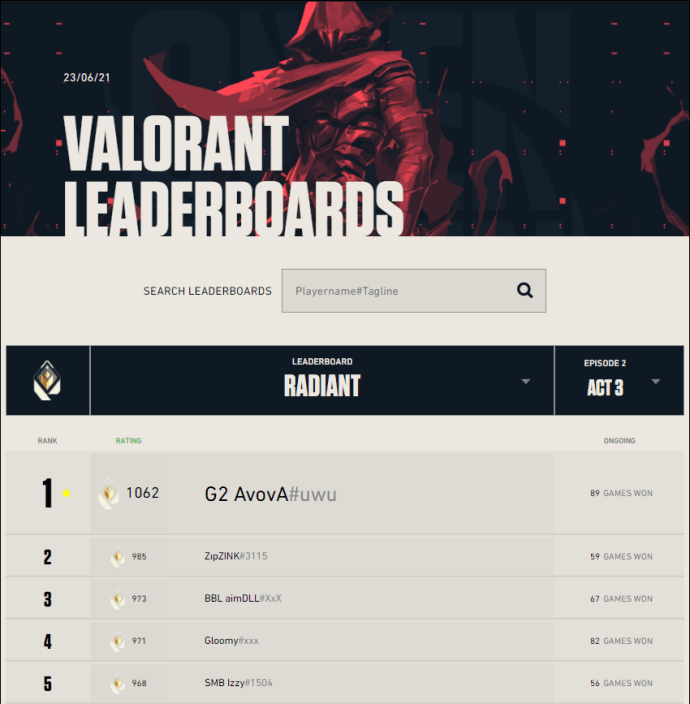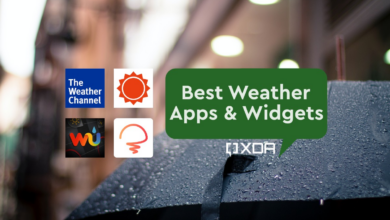
It’s time to enter Valorant’s competitive ranked mode if you enjoy FPS multiplayer games and have a fierce sense of competition. When this 5v5 FPS shooter game originally came out, it featured everything a gamer could ask for, but Riot Games has since improved it.
With the help of your preferred Agents, you have achieved mastery. It’s time to find out who the community’s actual best are at this point. Compete with others who share your interests in order to rise to the top of the local leaderboards. If you dare accept the challenge, you can win some bragging rights.
But before you enter a competitive battle, you need familiarize yourself with the ranking system. Read on to learn how the Valorant ranking system functions, how to climb the rankings, and how the game’s Acts affect ranking.
Summary of the Valorant Rank System
The ranking structure of Valorant can be a little perplexing, especially for newbies. With a few significant distinctions that are exclusive to Riot Games, the system is similar to other multiplayer rating systems.
To begin with, you can’t just enter competitive or ranked mode at random. For the game’s competitive mode to be available, you must finish 10 unrated matches. Players only needed to finish 20 unrated games to unlock this new mode when it first came out. Games are simpler to complete than matches, so trolls and smurfs flooded the matched events and caused a wide range of issues.
Riot Games “upped” the unlocking requirements in the form of match completions as a response to possibly troublesome players. While it’s not the ideal method, finishing matches calls for far more focus and commitment than simply hopping into a few simple matchups.
Five placement matches must be completed after you have won the necessary ten unrated matches. The game uses placement matches to determine where you should begin in the ranking system.
Don’t worry about placement matches before you become anxious. The game considers your performance as well, not simply whether you win or lose a placement match, even if you lose your matches. Your past 10 unrated victories are also taken into account by Valorant when deciding your rank.
Tiers and Ranks
The Valorant ranking system has eight ranks or divisions:
Iron
Bronze
Silver
Gold
Platinum
Diamond
Immortal
Radiant, formerly known as “Valorant,”
To go on to the next rank, you must pass through each of the first six ranks’ three tiers or sub-ranks. Immortal and Radiant, the two final ranks, each have just one tier. Including Unranked, there are 20 ranks in all in Valorant.
The majority of players begin at Iron rank, though their performance in placement matches may allow them to move up a rank and tier. Outstanding players, for instance, might skip four tiers and start at Bronze 2.
In Competitive mode, you can also choose to bypass ranks and tiers as you battle. Your MMR, or matchmaking rating, performance, and frags (kills) in a match are all factors. If you’re interested in moving up the ranks, consistency is essential. You might climb the ladder more quickly if you embark on long winning streaks and win a few MVP awards.
If you put in good work and win games, you might eventually climb the leaderboards, but it requires a lot of patience and commitment. The greatest of the best are only permitted in the top two ranks of the Valorant system. The Radiant level is limited to 500 players per region, and the Immortal rank is only available to the top 1% of players in each region.
Ranking Decay
Some multiplayer online games use a “ranking decay” concept to entice players to log in frequently. In certain games, a player’s rank begins to decline if they don’t play for a predetermined amount of time.
Since there is no rank degradation mechanic in Valorant, you are free to take pauses from the game whenever you choose. To restore your rank, you might need to play a placement game if you take an extended break from the game. The placement game helps establish whether you can still compete at your previous rank and how skilled you are after a long hiatus.
It makes sense from the standpoint of competition. Riot Games wants to make sure that you are matched with opponents who have the same skill level as you. You might also benefit by finishing a placement game before getting back into the swing of things. The last thing you want is to switch back to competitive mode just to discover that you’re somewhat rusty and overwhelmed.
District Leaderboards
Want to know how you compare to other gamers in your area?
The regional leaderboards were a brand-new feature for competitive players that was introduced in Episode 2 of Valorant. Your ranking and rating are shown on the leaderboards along with private data like your Riot ID and player card. When competing, you may always edit your personal information to read “Secret Agent” if you’d prefer to remain a little more anonymous.
Unfortunately, after competitive mode has started, you won’t be able to view where you rank on the regional leaderboards. First, you must compete in at least 50 games. You’ll need to invest some time into the game and play at least one competitive game a week to maintain your position on the leaderboard.
As previously indicated, if you go missing for a few weeks, you won’t lose rank, but you also won’t show up on the leaderboard.
Reviewing the Match History
As you advance in the ranks, gaining insight into your previous games will help you identify what you’re doing right and where everything is going wrong. For instructions on how to retrieve your match history, see below:
- Visit the main dashboard for the game.
- At the top of the screen, select the Career tab.
- Look at the details about your most recent ten games.
Along with kills, spike plants, assists, and first bloods, you’ll be able to check data like wins and losses. If you enjoy playing a little meta, this knowledge is essential for comprehending and improving your match performance.
In addition, you can check out how other players did during the same match. Just pick a game and go through the information.
Explained: Match Making Rating (MMR)
One of the most significant figures that you’ll never see in competitive mode is your Match Making Rating, or MMR. In competitive mode, it determines how you are paired to other players. Your MMR is the rung on the ladder you would be on if you could visualise one.
No two players will ever occupy the same rung or position on the ladder, according to Riot Games. Whether you climb the MMR ladder or get “pushed down by others” depends on each match. However, it is merely a rating that is independent of your RR or Rank Rating and aids the game in placing you with other players of a comparable level.
What is Rank Rating (RR)?
The quantity of points you receive following each competitive game is your Rank Rating. Wins in competitions and your general performance in the match, particularly in lower ranks, determine how many RR points you receive.
You need to acquire 100 RR points in order to move on to the next tier. The distribution of points varies from game to game, but generally speaking, it looks like this:
Wins: 10–50RR, and 5+RR for Diamond levels and higher.
Losses: minus 0 to 30 RR, with a maximum decrease of 50 RR for Diamond ranks and higher.
20 RR (based on performance) draws for the tiers of Iron through Diamond
However, if you don’t earn any RR points during the game, you risk being demoted to the lower tier. You won’t drop below 80 RR for the newly downgraded rank if you are protected from being demoted by Valorant’s “demotion protection” feature.
The good news is that you can return to your old rank in just 20 RR, but the bad news is that you were initially degraded.
RR vs. MMR
In Valorant, your MMR and RR are two different scoring systems. One aids in the game’s ability to pair you up with compatible opponents, while the other establishes your competitive performance rank.
Here’s when things become a little perplexing:
Riot Games works hard to find the best matches for your skill set, but they can only guess how well you’d do. Your Match Making Rating is that “concept.” Players are placed at the low end of their estimated rank for making matches to test you based on both your MMR and RR.
If you “pass” the exam or repeatedly succeed, you’ll move up the ladder of success and be paired with other players who share your level of skill. Additionally, you’ll notice a change in your RR points.
You will score more points for victories than losses, and vice versa. With all those extra RR points, you’ll be better prepared to get to the top of the system’s evaluation of your rank.
Riot Games eventually wants all players’ MMR and RR scores to “converge” in that direction. Your MMR should enable you to demonstrate that you are deserving of that rank while your RR should accurately reflect your performance level.
Rank Ascension by Skill, Not Grit
The ranking system doesn’t function that way, therefore it’s tempting to play as many games as you can to “grind” your way to the top of the leaderboards. The emphasis in the game is on “wins,” but they also consider how you win and the abilities you demonstrated in your bouts. It’s all about quality, not quantity, if you want to move up Valorant’s rating system.







